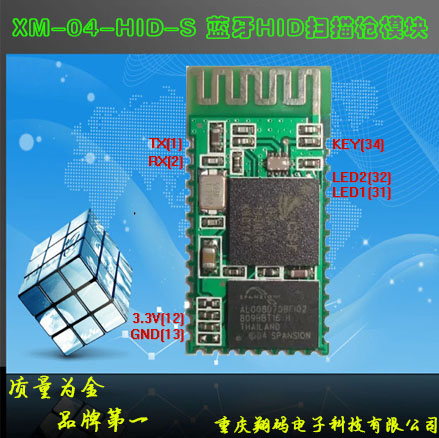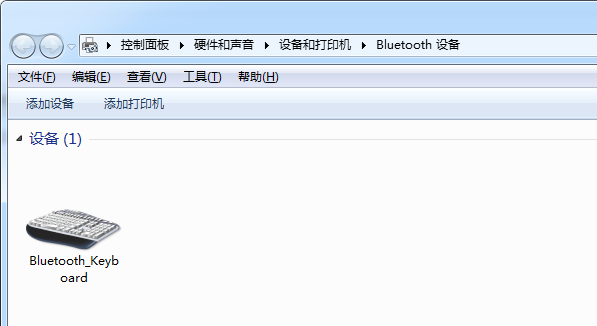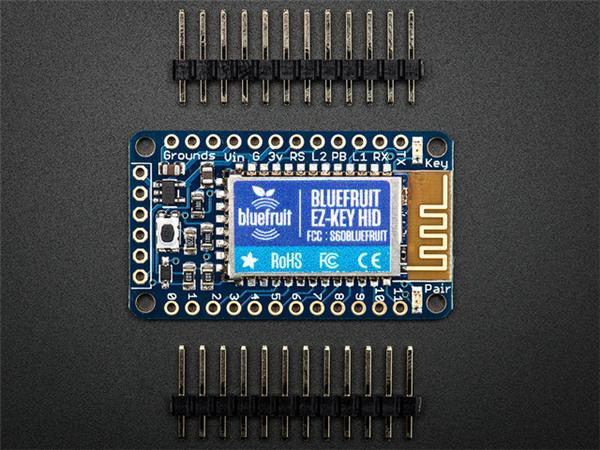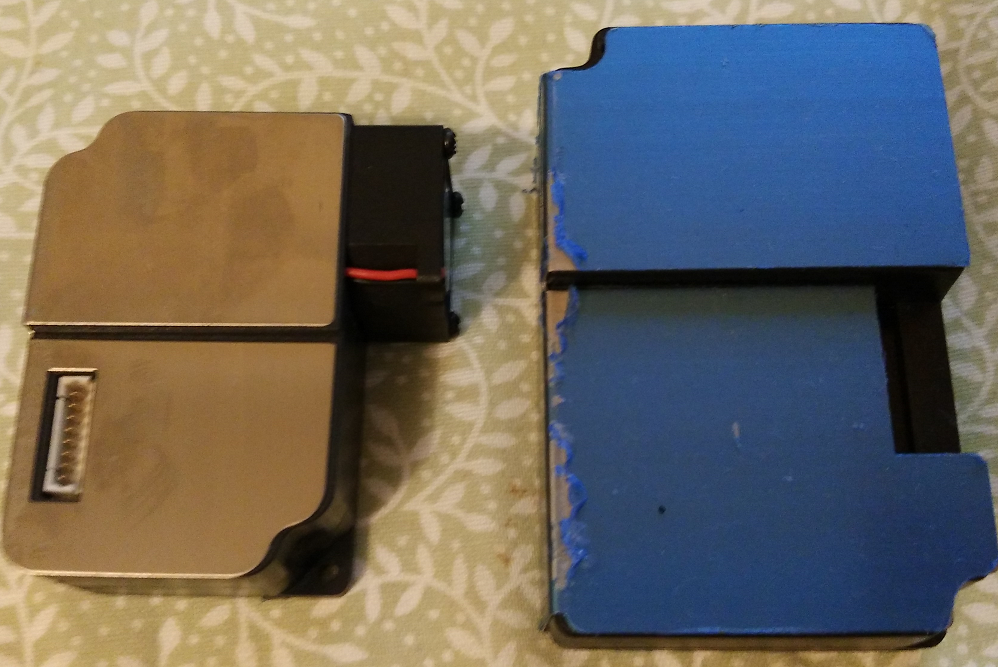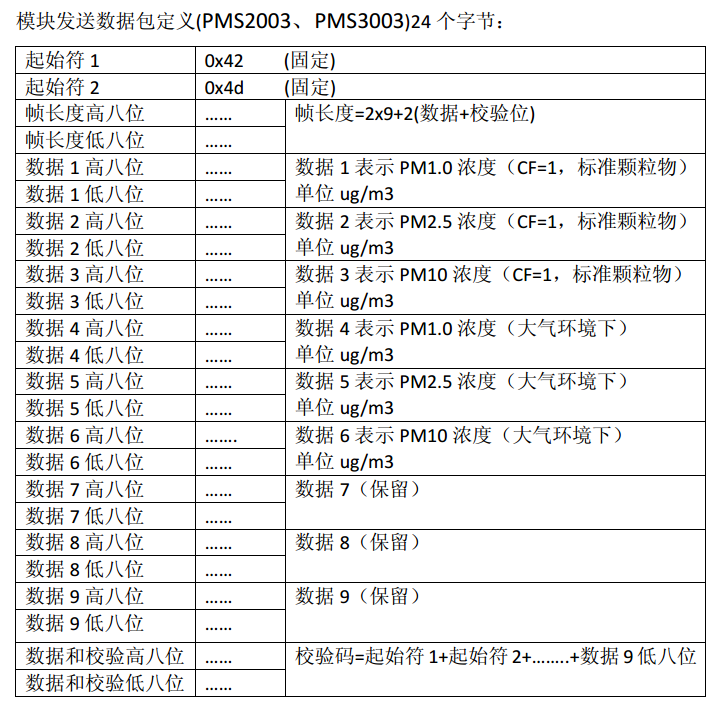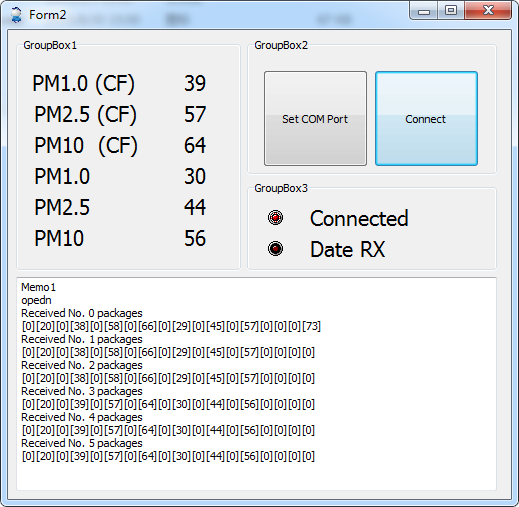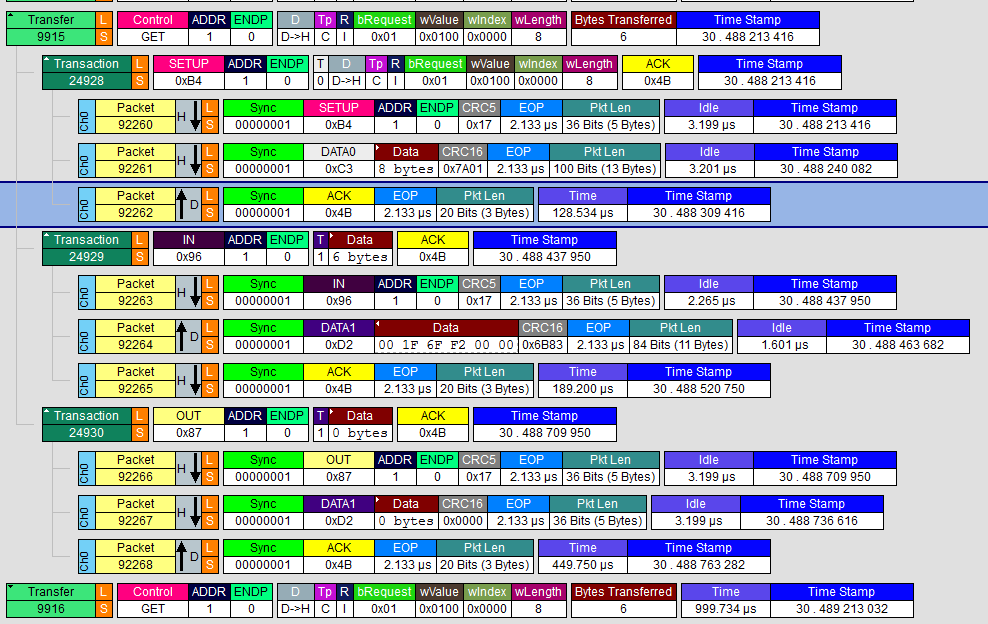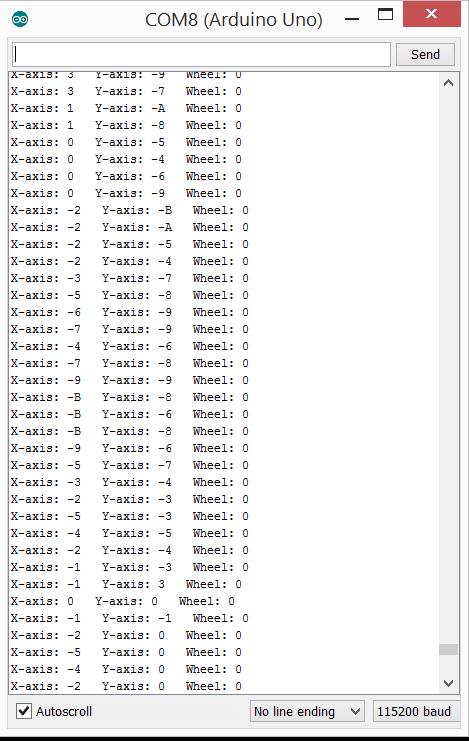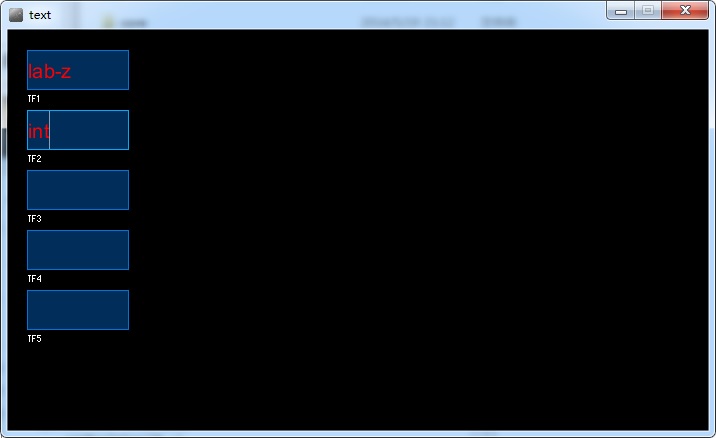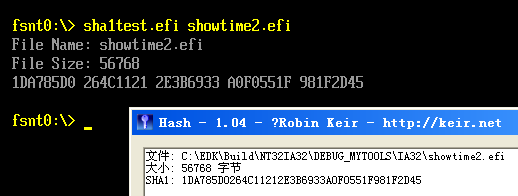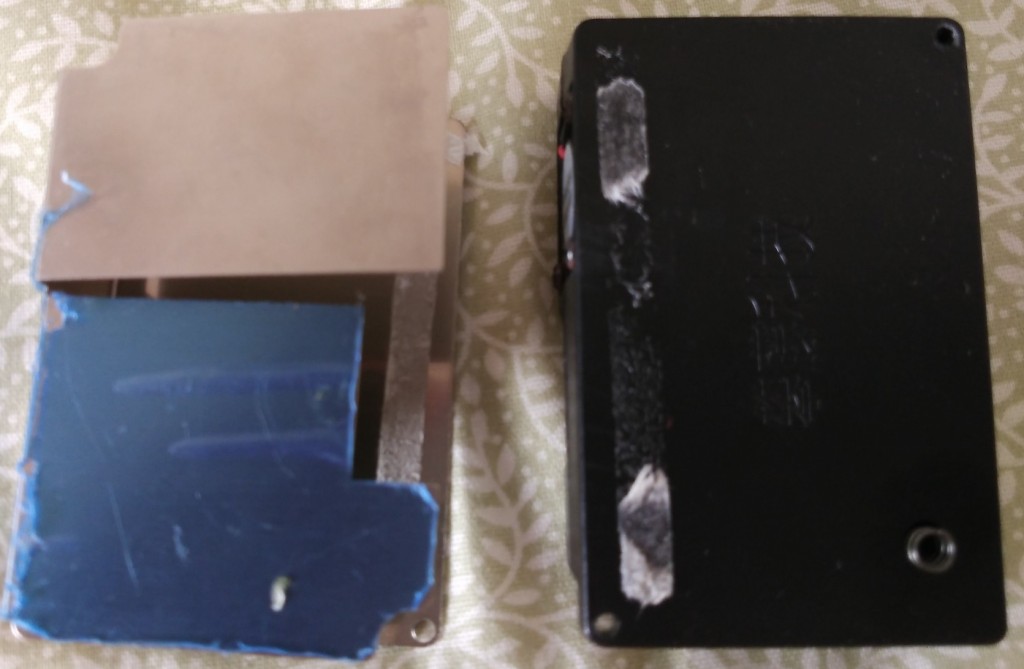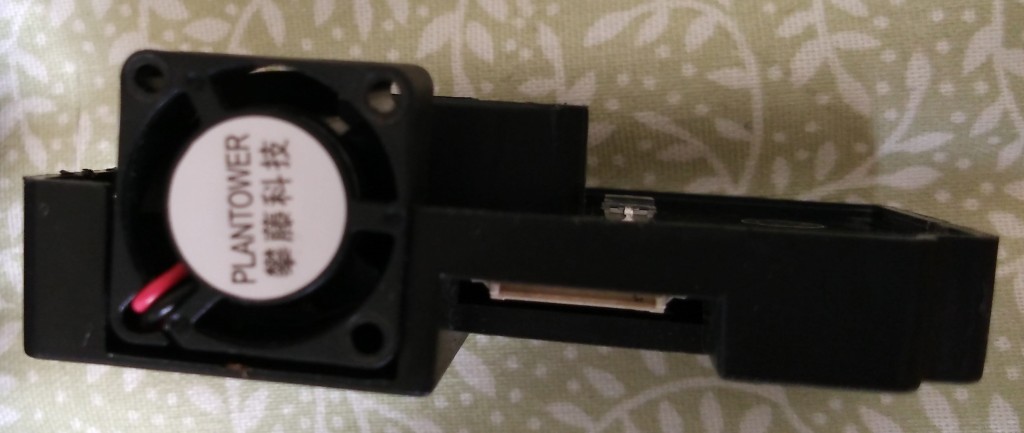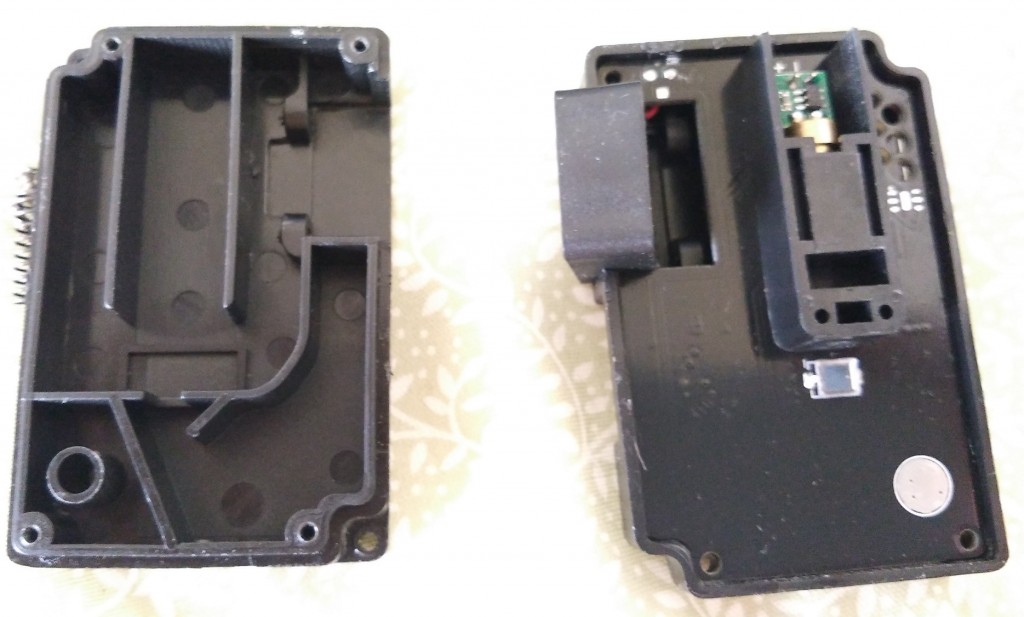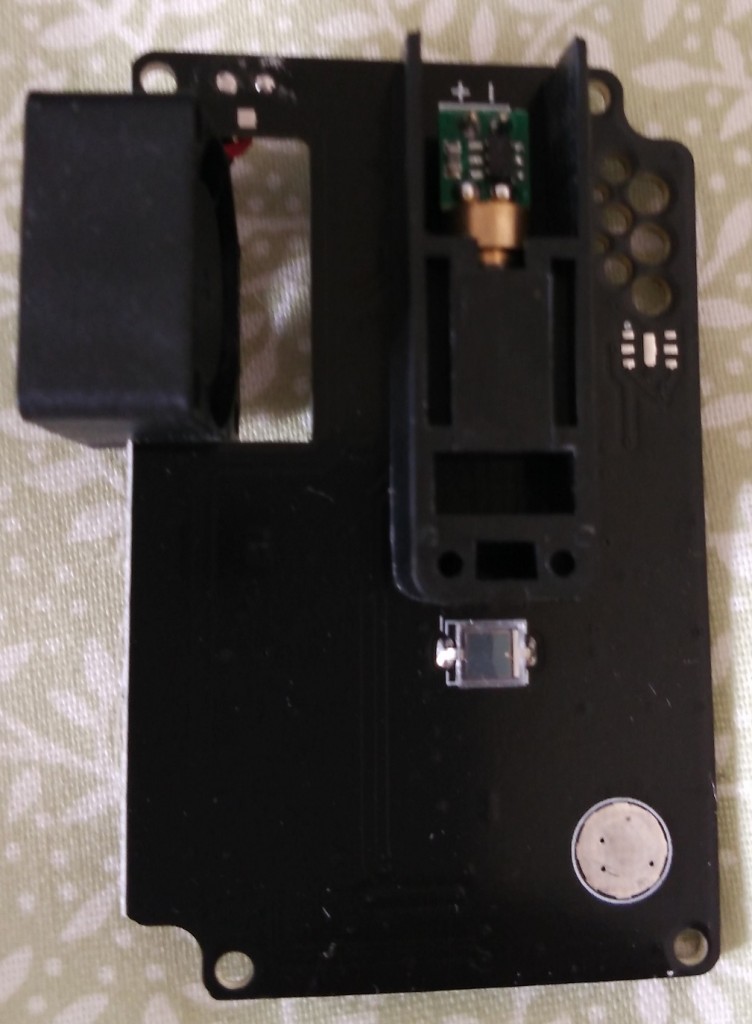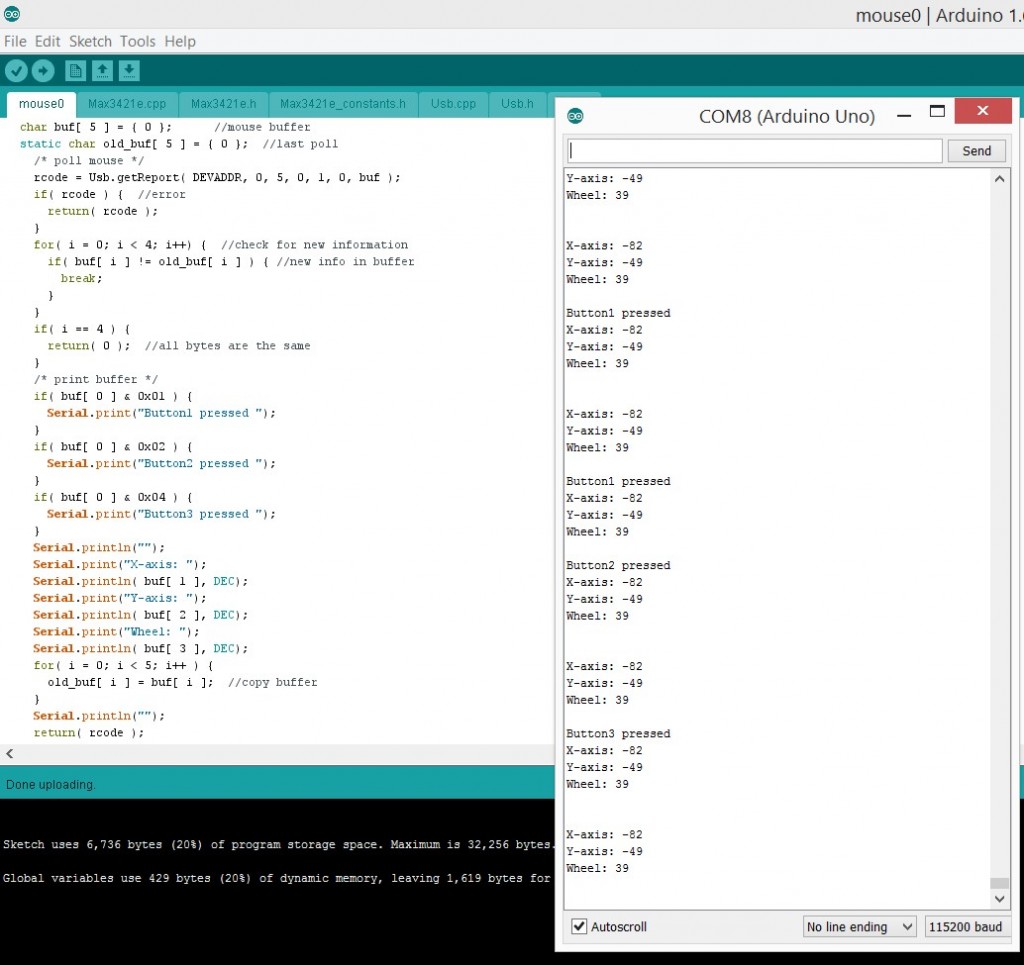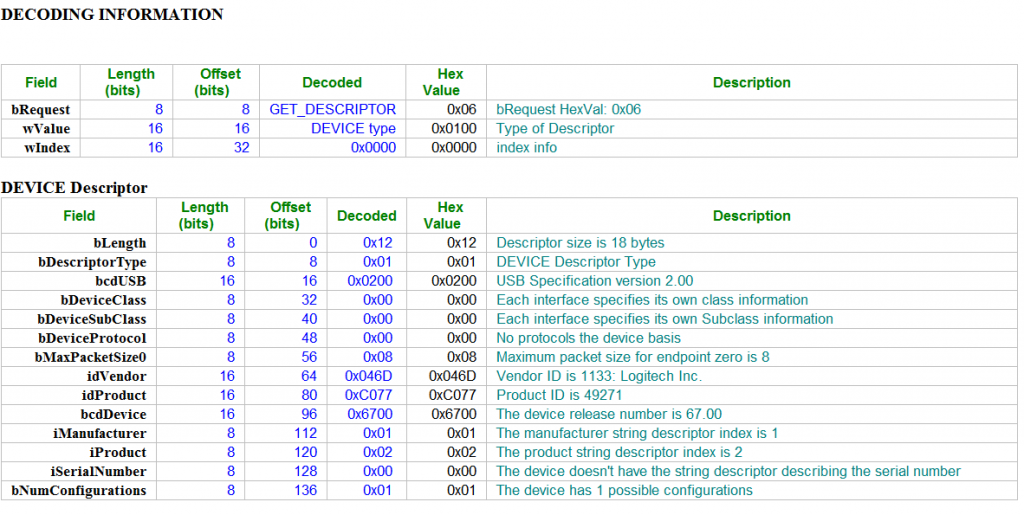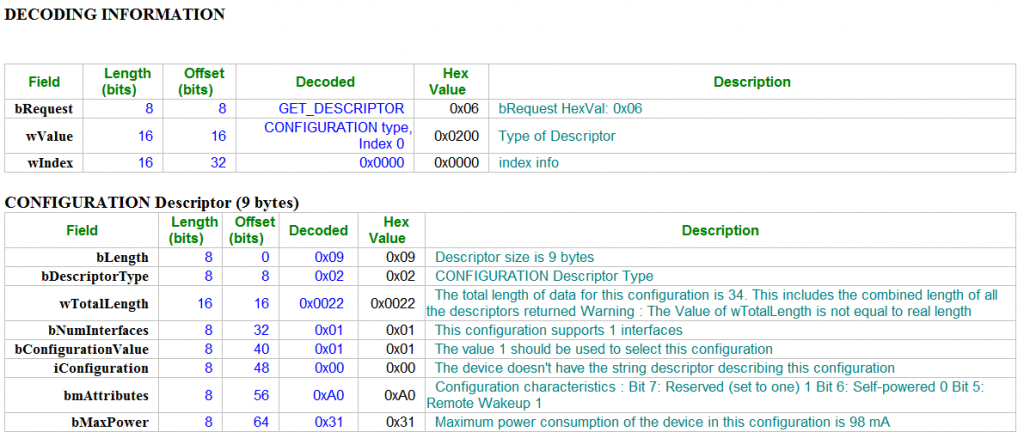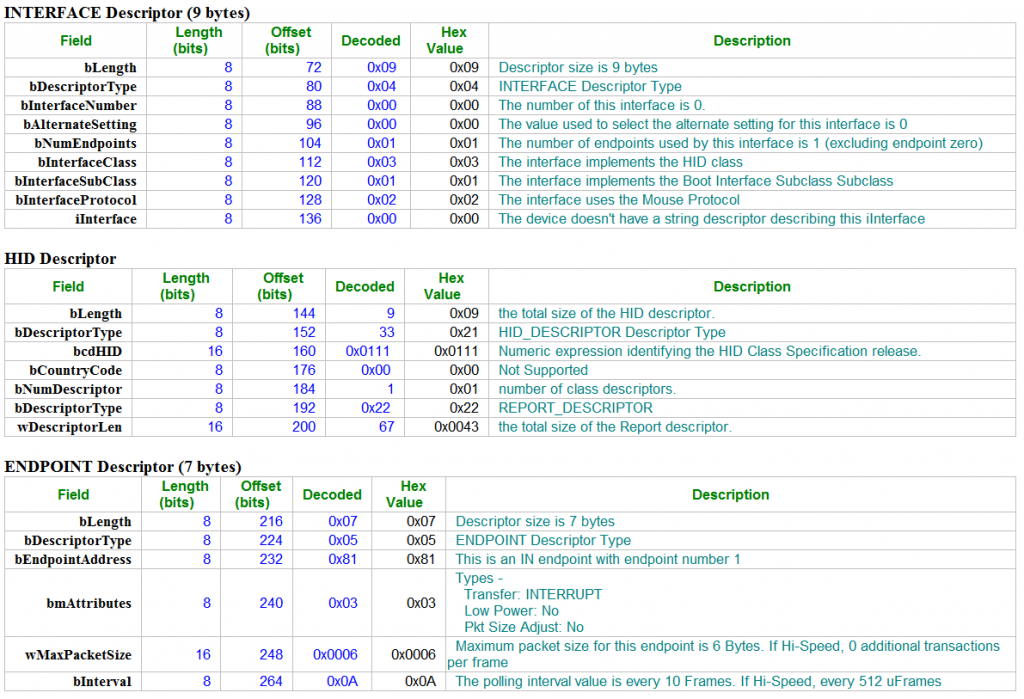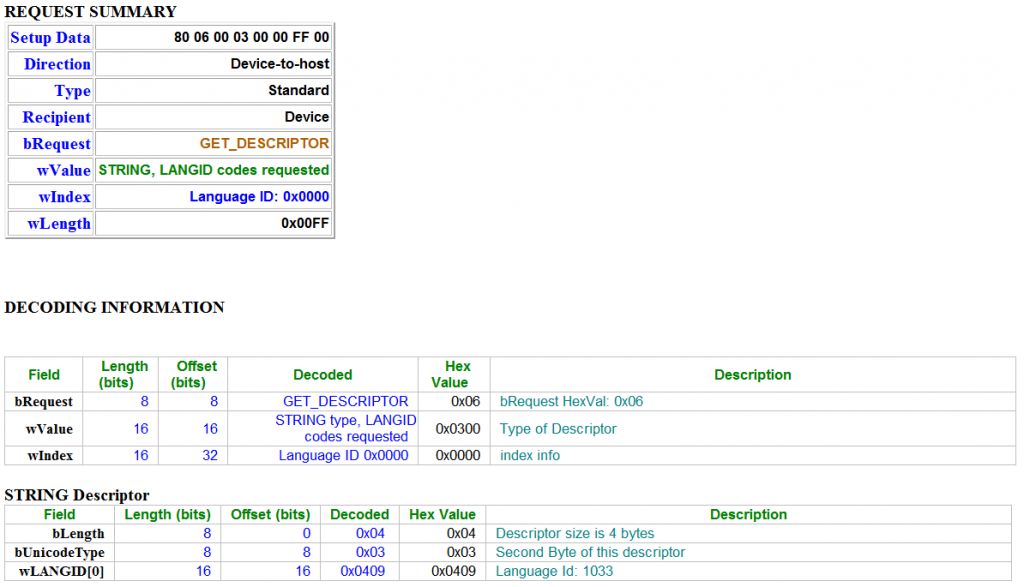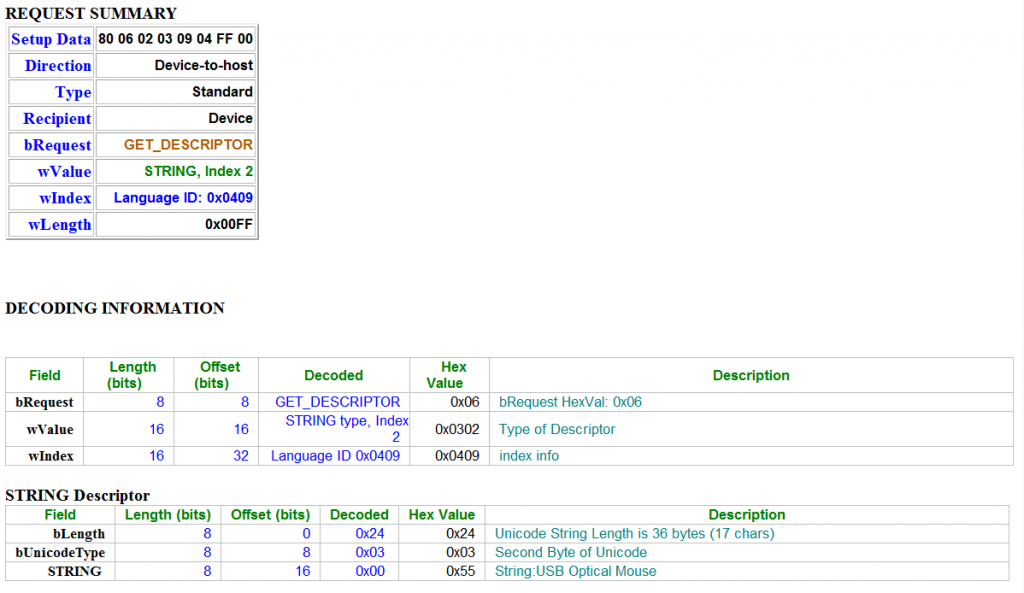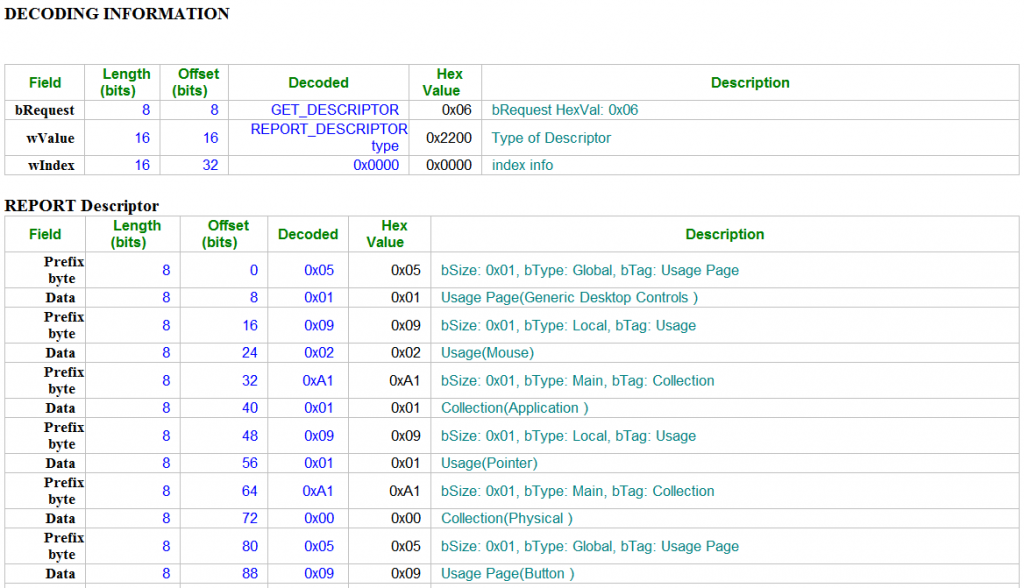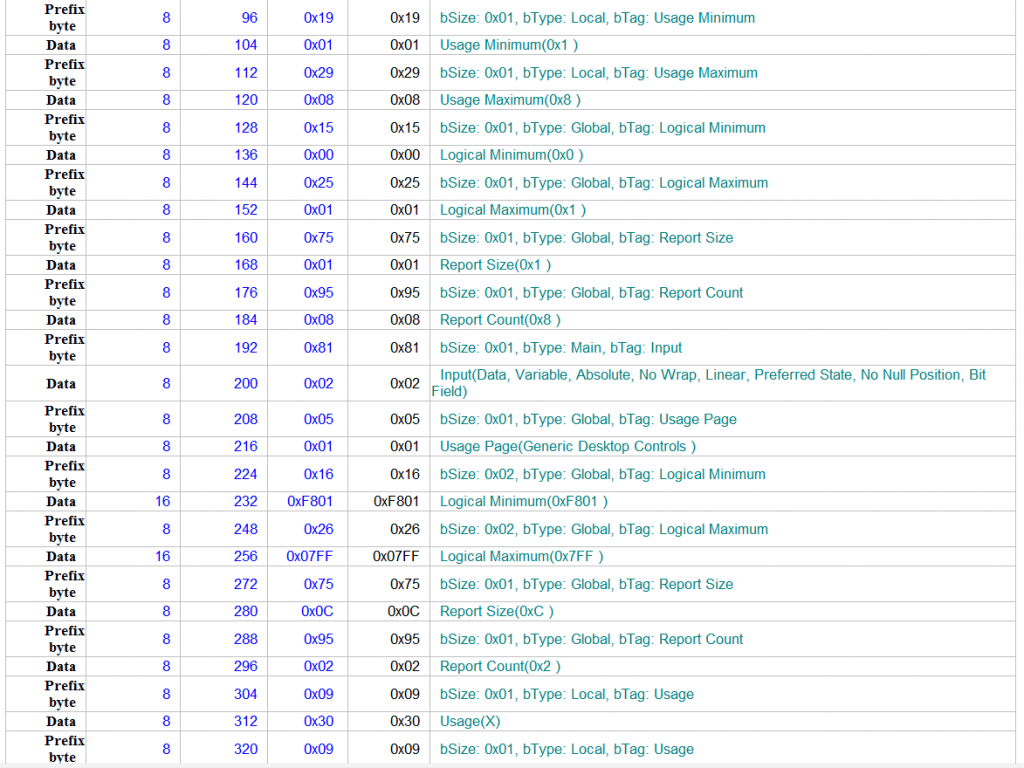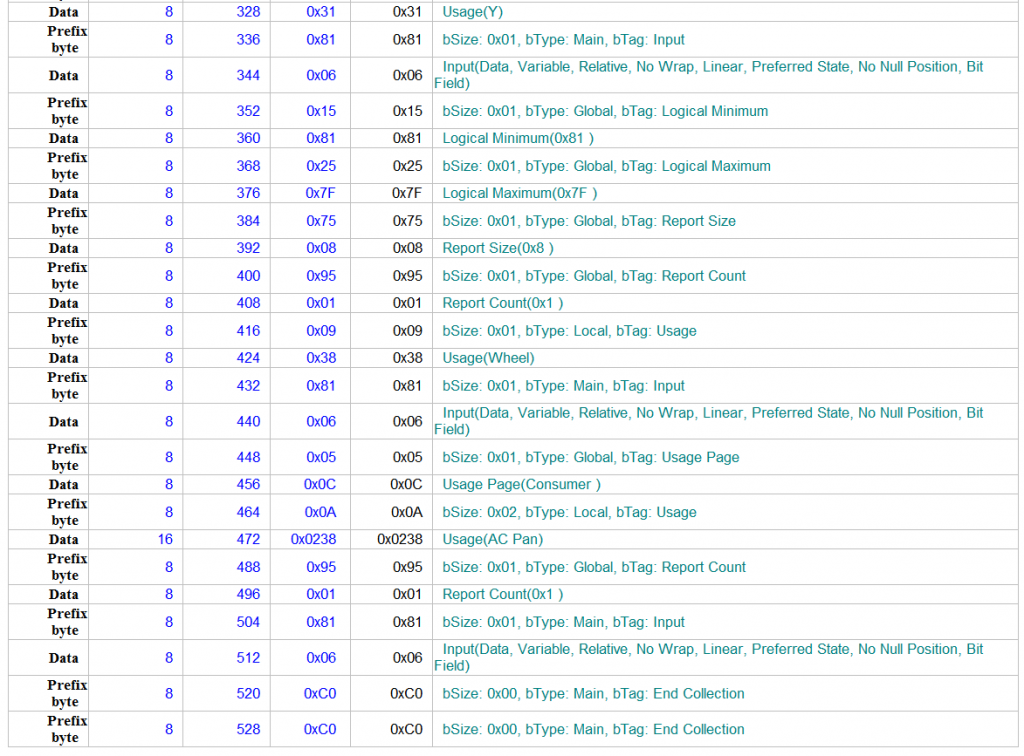本文介绍如何使用 Arduino 打造一个设备,能够将你的USB键盘转化为蓝牙键盘。
键盘可以算作PC上最古老的设备了,他的出现使得人类可以用非常简单的方法与电脑进行交互。同样的,由于各种历史原因,键盘也是PC上最复杂,兼容性问题最多的设备之一(类似的还有硬盘,不过从IDE到SATA的进化过程中,标准明确,兼容性问题少多了)。
网上流传着一篇DIY USB键盘转换为无线的文章,非常不幸的是,那篇文章是错误的,很明显的错误是作者认为键盘是单向传输,而实际上传输是双向的。比如,USB每次通讯都需要HOST和SLAVE的参与,即便是PS2键盘的通讯也同样如此。此外,大小写键之类切换是主机端进行控制的。
硬件部分Arduino UNO , USB Host Shield 和 HID 蓝牙芯片。强调一下这里使用的是 HID 蓝牙芯片,并非普通的蓝牙串口透传芯片【特别注意是“蓝牙键盘芯片”也不是“蓝牙条码模块”】。关于这个模块可以参考我在【参考1】中的实验。
硬件连接很简单,USB HOST Shield插在 Arduino上,然后VCC/GND/TX/RX将Arduino 和 HID蓝牙模块连接在一起。

原理:首先,为了通用性和编程简单,我们用USB HOST发送命令把键盘切换到 Boot Protocol 模式下。这样即使不同的键盘,每次发出来的数据也都是统一的格式。然后,我们直接读取缓冲数据就可以解析出按键信息了。最后,将取下来的按键信息(Scan Code)按照HID蓝牙模块的格式要求通过串口送到模块上,主机端就收到了。
上述连接就可以正常工作了,但是为了美观和提高可靠性,我找到之前买的一个面包板Shield。

插好之后就是这样
具体代码:
/* MAX3421E USB Host controller LCD/keyboard demonstration */
//#include <Spi.h>
#include "Max3421e.h"
#include "Usb.h"
/* keyboard data taken from configuration descriptor */
#define KBD_ADDR 1
#define KBD_EP 1
#define KBD_IF 0
#define EP_MAXPKTSIZE 8
#define EP_POLL 0x0a
/**/
//******************************************************************************
// macros to identify special charaters(other than Digits and Alphabets)
//******************************************************************************
#define BANG (0x1E)
#define AT (0x1F)
#define POUND (0x20)
#define DOLLAR (0x21)
#define PERCENT (0x22)
#define CAP (0x23)
#define AND (0x24)
#define STAR (0x25)
#define OPENBKT (0x26)
#define CLOSEBKT (0x27)
#define RETURN (0x28)
#define ESCAPE (0x29)
#define BACKSPACE (0x2A)
#define TAB (0x2B)
#define SPACE (0x2C)
#define HYPHEN (0x2D)
#define EQUAL (0x2E)
#define SQBKTOPEN (0x2F)
#define SQBKTCLOSE (0x30)
#define BACKSLASH (0x31)
#define SEMICOLON (0x33)
#define INVCOMMA (0x34)
#define TILDE (0x35)
#define COMMA (0x36)
#define PERIOD (0x37)
#define FRONTSLASH (0x38)
#define DELETE (0x4c)
/**/
/* Modifier masks. One for both modifiers */
#define SHIFT 0x22
#define CTRL 0x11
#define ALT 0x44
#define GUI 0x88
/**/
/* "Sticky keys */
#define CAPSLOCK (0x39)
#define NUMLOCK (0x53)
#define SCROLLLOCK (0x47)
/* Sticky keys output report bitmasks */
#define bmNUMLOCK 0x01
#define bmCAPSLOCK 0x02
#define bmSCROLLLOCK 0x04
/**/
EP_RECORD ep_record[ 2 ]; //endpoint record structure for the keyboard
char buf[ 8 ] = { 0 }; //keyboard buffer
char old_buf[ 8 ] = { 0 }; //last poll
/* Sticky key state */
bool numLock = false;
bool capsLock = false;
bool scrollLock = false;
bool line = false;
void setup();
void loop();
MAX3421E Max;
USB Usb;
void setup() {
Serial.begin( 9600 );
Serial.println("Start");
Max.powerOn();
delay( 200 );
}
void loop() {
Max.Task();
Usb.Task();
if( Usb.getUsbTaskState() == USB_STATE_CONFIGURING ) { //wait for addressing state
kbd_init();
Usb.setUsbTaskState( USB_STATE_RUNNING );
}
if( Usb.getUsbTaskState() == USB_STATE_RUNNING ) { //poll the keyboard
kbd_poll();
}
}
/* Initialize keyboard */
void kbd_init( void )
{
byte rcode = 0; //return code
/**/
/* Initialize data structures */
ep_record[ 0 ] = *( Usb.getDevTableEntry( 0,0 )); //copy endpoint 0 parameters
ep_record[ 1 ].MaxPktSize = EP_MAXPKTSIZE;
ep_record[ 1 ].Interval = EP_POLL;
ep_record[ 1 ].sndToggle = bmSNDTOG0;
ep_record[ 1 ].rcvToggle = bmRCVTOG0;
Usb.setDevTableEntry( 1, ep_record ); //plug kbd.endpoint parameters to devtable
/* Configure device */
rcode = Usb.setConf( KBD_ADDR, 0, 1 );
if( rcode ) {
Serial.print("Error attempting to configure keyboard. Return code :");
Serial.println( rcode, HEX );
while(1); //stop
}
/* Set boot protocol */
rcode = Usb.setProto( KBD_ADDR, 0, 0, 0 );
if( rcode ) {
Serial.print("Error attempting to configure boot protocol. Return code :");
Serial.println( rcode, HEX );
while( 1 ); //stop
}
delay(2000);
Serial.println("Keyboard initialized");
}
/* Poll keyboard and print result */
/* buffer starts at position 2, 0 is modifier key state and 1 is irrelevant */
void kbd_poll( void )
{
char i;
boolean samemark=true;
static char leds = 0;
byte rcode = 0; //return code
/* poll keyboard */
rcode = Usb.inTransfer( KBD_ADDR, KBD_EP, 8, buf );
if( rcode != 0 ) {
return;
}//if ( rcode..
for( i = 2; i < 8; i++ ) {
if( buf[ i ] == 0 ) { //end of non-empty space
break;
}
if( buf_compare( buf[ i ] ) == false ) { //if new key
switch( buf[ i ] ) {
case CAPSLOCK:
capsLock =! capsLock;
leds = ( capsLock ) ? leds |= bmCAPSLOCK : leds &= ~bmCAPSLOCK; // set or clear bit 1 of LED report byte
break;
case NUMLOCK:
numLock =! numLock;
leds = ( numLock ) ? leds |= bmNUMLOCK : leds &= ~bmNUMLOCK; // set or clear bit 0 of LED report byte
break;
case SCROLLLOCK:
scrollLock =! scrollLock;
leds = ( scrollLock ) ? leds |= bmSCROLLLOCK : leds &= ~bmSCROLLLOCK; // set or clear bit 2 of LED report byte
Serial.write(0x0c); //BYTE1
Serial.write(0x00); //BYTE2
Serial.write(0xA1); //BYTE3
Serial.write(0x01); //BYTE4
Serial.write(00); //BYTE5
Serial.write(0x00); //BYTE6
Serial.write(0x1e); //BYTE7
Serial.write(0); //BYTE8
Serial.write(0); //BYTE9
Serial.write(0); //BYTE10
Serial.write(0); //BYTE11
Serial.write(0); //BYTE12
delay(500);
Serial.write(0x0c); //BYTE1
Serial.write(0x00); //BYTE2
Serial.write(0xA1); //BYTE3
Serial.write(0x00); //BYTE4
Serial.write(0); //BYTE5
Serial.write(0x00); //BYTE6
Serial.write(0); //BYTE7
Serial.write(0); //BYTE8
Serial.write(0); //BYTE9
Serial.write(0); //BYTE10
Serial.write(0); //BYTE11
Serial.write(0); //BYTE12
break;
case DELETE:
line = false;
break;
case RETURN:
line =! line;
break;
//default:
//Serial.print(HIDtoA( buf[ i ], buf[ 0 ] ));
// break;
}//switch( buf[ i ...
rcode = Usb.setReport( KBD_ADDR, 0, 1, KBD_IF, 0x02, 0, &leds );
if( rcode ) {
Serial.print("Set report error: ");
Serial.println( rcode, HEX );
}//if( rcode ...
}//if( buf_compare( buf[ i ] ) == false ...
}//for( i = 2...
i=0;
while (i<8)
{
if (old_buf[i]!=buf[i]) { i=12; }
i++;
}
if (i==13) {
// for (i=0;i<8;i++) {
// Serial.print(buf[ i ],HEX);
// Serial.print(']');
// }
// Serial.println(' ');
Serial.write(0x0c); //BYTE1
Serial.write(0x00); //BYTE2
Serial.write(0xA1); //BYTE3
Serial.write(0x01); //BYTE4
//Labz_Debug Serial.write(buf[1]); //BYTE5
Serial.write(buf[0]); //BYTE5 //Labz_Debug
Serial.write(0x00); //BYTE6
Serial.write(buf[2]); //BYTE7
Serial.write(buf[3]); //BYTE8
Serial.write(buf[4]); //BYTE9
Serial.write(buf[5]); //BYTE10
Serial.write(buf[6]); //BYTE11
Serial.write(buf[7]); //BYTE12
}
//Labz_Debug for( i = 2; i < 8; i++ ) { //copy new buffer to old
for( i = 0; i < 8; i++ ) { //copy new buffer to old //Labz_Debug
old_buf[ i ] = buf[ i ];
}
}
/* compare byte against bytes in old buffer */
bool buf_compare( byte data )
{
char i;
for( i = 2; i < 8; i++ ) {
if( old_buf[ i ] == data ) {
return( true );
}
}
return( false );
}
我在处理SCROLLLOCK 键的地方插入了一个测试代码,理论上按下这个键的时候,主机还会收到 1 这个字符,这样是为了测试工作是否正常。
我在 x86 台式机上实测过,工作正常;小米4手机上实测过,工作正常; iPad 上是测过,工作也正常。
在iPad上工作的视频在下面:
完整代码下载
特别注意:
1. 因为我们使用的是最简单的Boot Protocol,所以如果你的键盘上有音量键之类的有可能失效;
2. 我不确定是否所有的键盘都会支持 Boot Protocol ,从之前玩USB鼠标的经验来看,确实有可能;
3. 供电部分没有经过优化,不知道电力消耗如何,不确定一个充电宝能够工作的时间;
最后讲一个小故事:有一次我去实验室,发现他们在折腾键盘。那是一款带着音量控制功能的键盘。系统测试的时候发现,按一下键盘音量键之后,屏幕上显示的音量会跳2格。从原理上说,按下那个键之后,键盘发出特定的Scan Code,系统中还有个专门响应这个Scan Code的程序然后在屏幕上绘制音量指示方块。蛮有意思的一件事情是:很多人认为大公司有操控供应商的能力,供应商在大厂面前会唯唯诺诺,这也是高层会有的想法,问题是底层人员未必吃这一套。每次想起这个事情,我都要想起敏感字关于矛盾的辩证法的论证。这个事情就是双方的下层在不停的扯,更准确的说,是键盘厂商,软件开发商和我们在一起纠缠,键盘厂商说同样的键盘在其他人家用起来没问题,软件开发商说我的软件在之前的机型上一直用,我们的人说,少扯淡,赶紧解决,前后一个多月都没有搞定…….那时候,组里刚买了一个usb逻辑分析仪,我用着感觉很好玩。于是,我就用逻辑分析仪测试了一下键盘,测试的结果是,键盘发出来的 Scan Code没有问题,每次按键都是一个Press一个Release,所以真相肯定是写上位机程序的软件厂商搞错了什么。截图附带着数据包一起丢给三方。这是最底层的传输,如果依然嘴硬,那只能落下笑柄而已。然后很快软件厂商就服软自己去修改了。只是说说我经历的事情,如果非要说出一些道理的话这个故事是为了说明:USB逻辑分析仪很有用……
就是这样.
=========================2017年5月11日更新=========================
有朋友说 Win ,Shift,Alt 都不工作,今天正好有空研究了一下,是我的代码有问题。解析出来的USB 键盘按键信息中 Buf[0] 是这些Key 的标志位,我没有正确Pass给模块。因此,修正下面2处代码,一个是发送,一个是每次保存当前的按键状态的位置:
Serial.write(0x0c); //BYTE1
Serial.write(0x00); //BYTE2
Serial.write(0xA1); //BYTE3
Serial.write(0x01); //BYTE4
Serial.write(buf[0]); //BYTE5
Serial.write(0x00); //BYTE6
Serial.write(buf[2]); //BYTE7
Serial.write(buf[3]); //BYTE8
Serial.write(buf[4]); //BYTE9
Serial.write(buf[5]); //BYTE10
Serial.write(buf[6]); //BYTE11
Serial.write(buf[7]); //BYTE12
}
for( i = 0; i < 8; i++ ) { //copy new buffer to old
old_buf[ i ] = buf[ i ];
}
修改后可以正常工作的代码:
参考:
1. http://www.lab-z.com/btkeyboard/ 蓝牙键盘模块的实验









